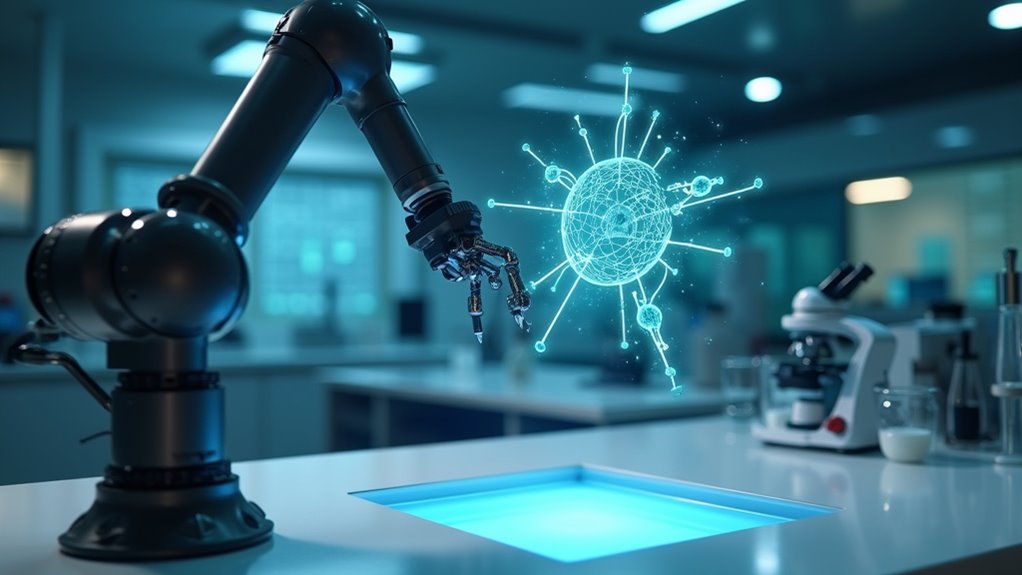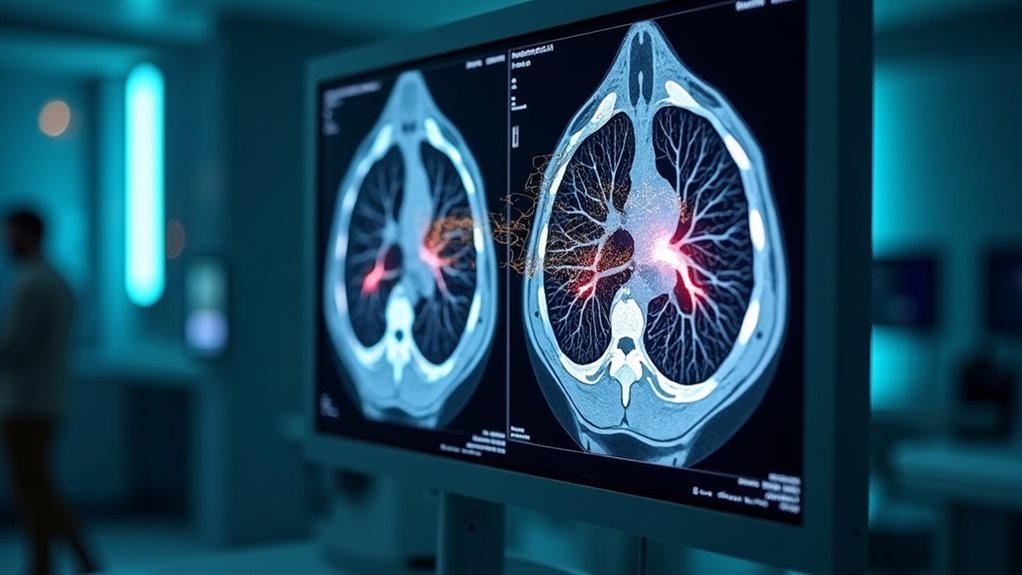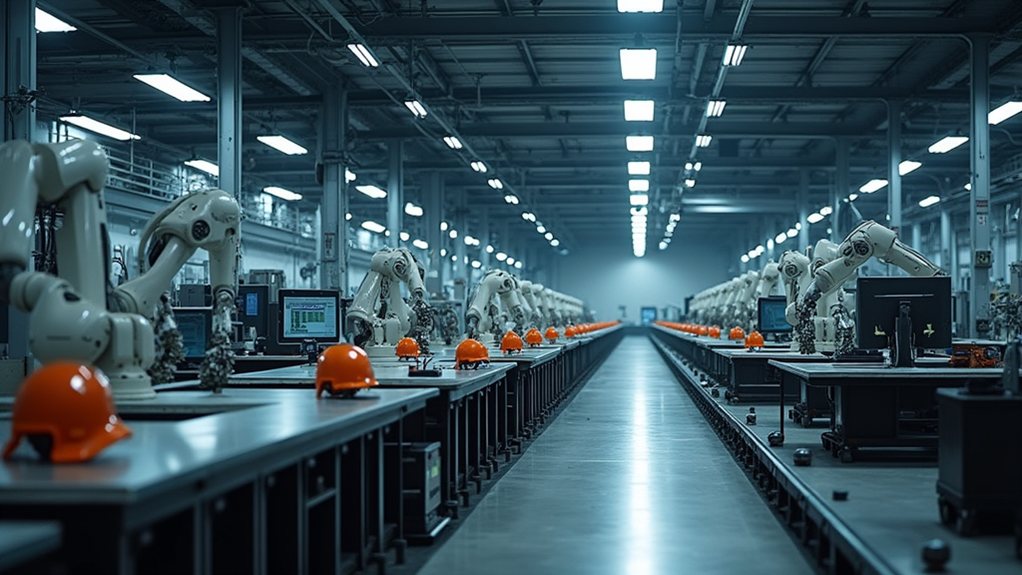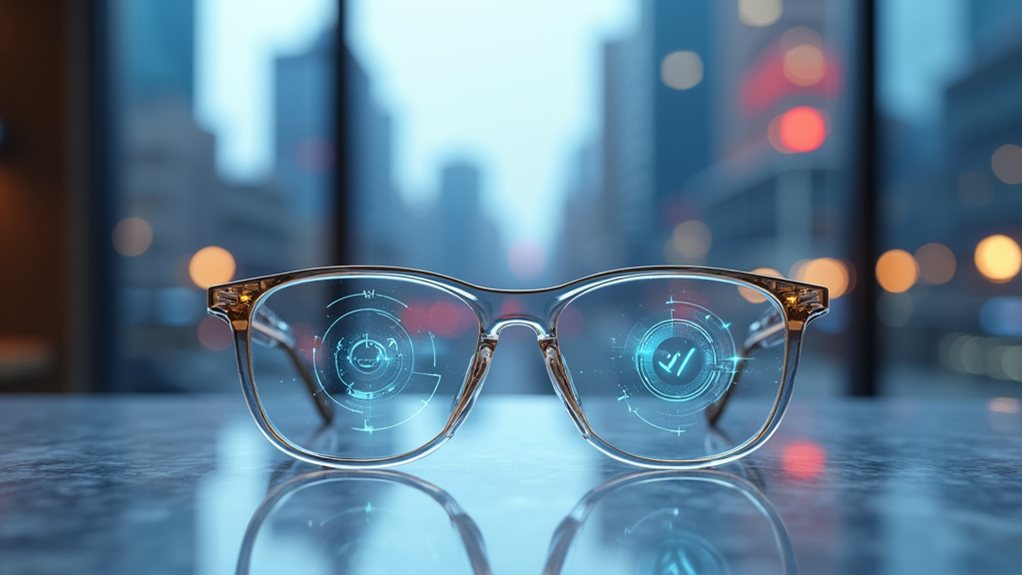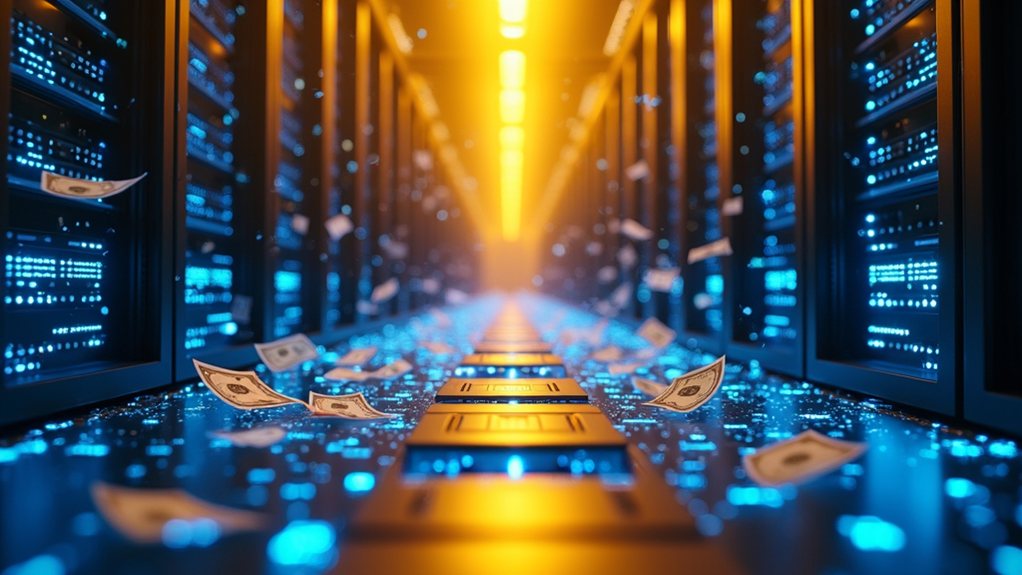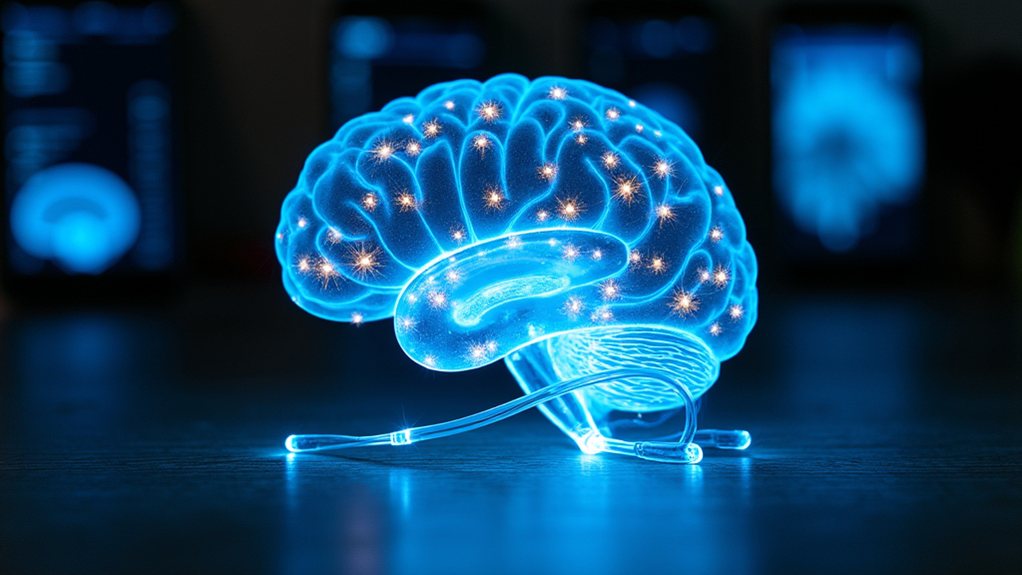AI systems now outperform humans at identifying never-before-seen molecules with stunning accuracy—exceeding 90% for drug-target interactions. Using techniques like coulomb matrices and iterative refinement, these systems can fingerprint molecules with just 10% of traditional x-ray data. Drug discovery timelines have shrunk from years to weeks as AI screens millions of compounds virtually. There’s a catch though: current systems struggle with molecules containing over 50 atoms. The molecular revolution is just warming up.
Peering into the invisible world of molecular structures, artificial intelligence has quietly surpassed human capabilities in identifying never-before-seen molecules. These silicon-brained wonders are now spotting chemical patterns that have remained stubbornly invisible to even the most caffeine-fueled human researchers.
The numbers are, frankly, a bit embarrassing for us humans. AI models are achieving prediction accuracies above 90% for drug-target interactions, with one showoff system reaching 96.3% accuracy in identifying novel targets for existing drugs. Remember when we thought pattern recognition was our thing? Well, the machines are doing it with 72% accuracy in molecular fingerprinting while requiring just 10% of the traditional x-ray data. Talk about efficiency!
These digital chemists use an impressive toolkit: coulomb matrices, fingerprint recognition, and something called “iterative refinement”—which is basically the AI equivalent of playing “getting warmer, getting colder” until it finds the right molecular structure. After training on millions of made-up molecules, these systems can look at a real, never-before-seen compound and nail its 3D configuration. Advanced tools like AlphaFold’s networks have revolutionized protein structure prediction, making previously impossible molecular visualizations routine. The integration of machine learning methods in molecular identification mirrors AI’s implementation in healthcare diagnostics, offering similar benefits of 24/7 availability and reduced error rates.
The impact on drug discovery has been nothing short of revolutionary. What once took years now takes weeks. Millions of potential compounds can be screened virtually while researchers are still deciding what to order for lunch. This isn’t just saving time—it’s dramatically expanding the chemical space we can explore. Similar to how AI in radiology enhances the detection of abnormalities in medical imaging, these systems identify molecular structures with unprecedented precision.
A molecular revolution where computers dream up drugs faster than scientists choose their sandwiches
But before we welcome our new molecular overlords, let’s acknowledge the limitations. Current AI systems tap out at molecules with about 50 atoms—essentially the molecular equivalent of a short story rather than War and Peace.
And like that friend who claims to know everything but actually just memorized Wikipedia, these systems are only as good as their training data.
Despite these constraints, one thing is crystal clear: in the molecular identification game, AI has taken the lead, and humans are playing catch-up.
